Risultati: 13
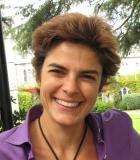
Funzione/Ruolo
Professoressa associata di Assestamento forestale e Selvicoltura presso l’Università degli Studi della Tuscia.
Percorso professionale
Laureata in Scienze Forestali presso l’Università degli Studi di Firenze nel 1996. Nel 1997 completa il Post-graduate Master Course in “Remote sensing and natural resources evaluation” (Istituto Agronomico per l’Oltremare di Firenze) e nel 2001 consegue il Dottorato di Ricerca in Economia e Pianificazione Forestale presso l’Università degli Studi di Firenze. Nel 2007 ottiene il Master di II livello in “Ecologia del paesaggio e pianificazione ambientale” presso l’Università La Sapienza, Roma.
Diventa ricercatrice presso il Dipartimento per l’Innovazione nei sistemi Biologici, Agroalimentari e Forestali (DIBAF) dell'Università degli Studi della Tuscia (Viterbo) nel 2010 e nel 2016 Professoressa di seconda fascia. È attualmente Coordinatrice del progetto Europeo PREVAIL (PREVention Action Increases Large fire response preparedness) e tra le team leader dei progetti REFORM (Increasing resilience of forest mixtures) e FREShLIFE (Demonstrating Remote Sensing integration in sustainable forest management).
Risultati scientifici
I principali interessi di ricerca di Anna Barbati riguardano l’applicazione di tecniche integrate di telerilevamento (da satellite, aereo, drone) e rilievi campionari per l’analisi e il monitoraggio della struttura, composizione e funzionalità degli ecosistemi forestali. Nell’ambito di una collaborazione sviluppata con UNECE/FAO Timber Section e European Environment Agency, ha contribuito allo sviluppo di un sistema tipologico di classificazione delle foreste European Forest Types, attualmente utilizzato in Europa come standard per confrontare in modo armonizzato informazioni sullo stato delle foreste e indicatori di gestione forestale sostenibile.
Ha partecipato a tre progetti di ricerca d’interesse nazionale e internazionale sul tema degli incendi nella regione Mediterranea, applicando tecnologie di telerilevamento (dati ottici multispettrali e LIDAR) per la mappatura di tipologie combustibili presenti in foresta, funzionali alla modellizzazione del comportamento del fuoco tramite simulatori. Si è inoltre interessata alla comprensione dei rapporti tra frequenza e ripercorrenza degli incendi forestali nella Regione mediterranea e caratteristiche del paesaggio predisponenti l’innesco e la propagazione del fuoco. Ciò ai fini della definizione di strategie su larga scala di prevenzione del rischio degli incendi boschivi tramite interventi di gestione del combustibile.
Progetti di ricerca più recenti che la vedono coinvolta riguardano l’interazione tra biodiversità (numero di specie arboree forestali e complessità della struttura degli ecosistemi), servizi ecosistemici (prodotti legnosi e non, biomasse forestali, sequestro del carbonio, offerta di habitat per la conservazione della biodiversità) e resilienza al cambiamento climatico delle foreste.
Attività editoriali e pubblicazioni
È Autrice di circa 100 pubblicazioni scientifiche e tecniche tra cui:
[2018] Bagaram M.B.1, Giuliarelli D., Chirici G., Giannetti F., Barbati A. UAV Remote Sensing for Biodiversity Monitoring: Are Forest Canopy Gaps Good Covariates? Remote Sensing, 10, 1397.
[2018] Barbati A, Scarascia Mugnozza G, Ayan S, Blasi E, Calama R, Canaveira P, Cicatiello C, Collalti A, Corona P, del RíoM, DucciF, PeruginiL. Adaptation and mitigation. In: FAO and Plan Bleu. 2018. State of Mediterranean Forests 2018. Food and Agriculture Organization of theUnited Nations, Rome and Plan Bleu, Marseille: 128-146
[2015] Barbati A, Corona P, D’amato E, Cartisano R. Is Landscape a Driver of Short-term Wildfire Recurrence? LANDSCAPE RESEARCH, 40 (1): 99-108.
[2014] Corona P, Ferrari B, Cartisano R, Barbati A. Calibration assessment of forest flammability potential in Italy. IFOREST, 7: 300-305
[2014] Barbati A, Marchetti M., Chirici G., Corona P. European Forest Types and Forest Europe SFM indicators: Tools for monitoring progress on forest biodiversity conservation.FOREST ECOLOGY AND MANAGEMENT, 321: 145-157
[2013] Chiriacò MV, Perugini L, Cimini D, D’Amato E, Valentini R, Bovio G, Corona P, Barbati A (2013). Comparison of approaches for reporting forest fire-related biomass loss and greenhouse gas emissions in southern Europe. THE INTERNATIONAL JOURNAL OF WILDLAND FIRE, 22(6): 730-738.
[2013] Barbati A, Chirici G, Corona P, Montaghi A, Travaglini D (2009). Area-based assessment of forest standing volume by field measurements and airborne laser scanner data. INTERNATIONAL JOURNAL OF REMOTE SENSING, 30 (19): 5177-5194.
[2011] Corona P., Chirici G., McRoberts R.E., Winter S., Barbati A. Contribution of large-scale forest inventories to biodiversity assessment and monitoring. FOREST ECOLOGY AND MANAGEMENT, vol. 262, p. 2061-2069, ISSN: 0378-1127, doi: 10.1016/j.foreco.2011.08.044.
[2008] Lamonaca A, Corona P, Barbati A. Exploring forest structural complexity by multi-scale segmentation of VHR imagery. REMOTE SENSING OF ENVIRONMENT, vol. 112, p. 2839-2849, ISSN: 0034-4257.
Riconoscimenti e premi
Dal 2010 è Coordinator della International Union of Forest Research Organizations (IUFRO) Unit 8.02.01 - Key factors and ecological functions for forest biodiversity e Socia corrispondente dell’Accademia Italiana di Scienze Forestali.

Funzione/Ruolo
Professoressa Emerita di Biologia Vegetale, Università degli Studi di Torino.
Percorso professionale
Dopo aver conseguito la laurea in Scienze Biologiche all'Università di Torino nel 1970, Paola Bonfante prosegue la sua formazione con una borsa di studio presso il Centro di Studio sulla Micologia del Terreno (CSMT) del CNR di Torino. Dal 1973 è Ricercatrice del CNR, attività che svolge fino al 1985. Da quella data è Professoressa Ordinaria di Biologia Vegetale all'Università di Torino fino al 2017. Dal 1995 al 2009 è Responsabile della Sezione di Torino dell'Istituto di Protezione per le Piante del CNR. Dal 2006 al 2011 è Direttrice del Dipartimento di Biologia Vegetale dell'Università di Torino, e in seguito, fino al 2013, è Coordinatrice del corso di dottorato di ricerca in Biologia e Biotecnologia. Fino al 2017 coordina il laboratorio delle Interazioni Piante-Microorganismi. Oggi è Professoressa Emerita e unisce alla residua attività di ricerca un'intesa opera di divulgazione scientifica.
Risultati scientifici
Paola Bonfante professoressa Emerita di Biologia Vegetale all'Università di Torino ha dedicato la sua attività scientifica alle interazioni piante-microorganismi, un campo in cui è considerata una pioniera e che è rilevante sia per l'ambiente sia per le ricadute sulla società. In particolare, con il suo gruppo di ricerca si è focalizzata sin dal 1975 sullo studio della biologia delle associazioni simbiotiche e della tassonomia dei funghi, indagando le interazioni intime tra funghi e piante e tra batteri e funghi. Applicando le tecniche di indagine genetica, all'inizio degli anni Novanta ha fornito importanti contributi alla conoscenza delle micorrize (associazioni simbiotiche tra funghi del terreno e radici delle piante) presenti sia in natura sia negli agroecosistemi. Paola Bonfante ha scoperto un gruppo di endobatteri che vivono all'interno di funghi micorrizici, in un processo di simbiosi nella simbiosi, e che possono modulare alcuni dei tratti funzionali dei loro ospiti fungini. Grazie alle tecniche di Next Generation Sequencing, il suo gruppo di ricerca ha sequenziato genomi di funghi micorrizici e continua a studiare le basi cellulari e molecolari delle interazioni pianta-fungo: indagandone i determinanti genetici si propone di definirne la biodiversità e le modalità di comunicazione. Scopo ultimo della ricerca è di valutare l'impatto e l'applicazione del cosiddetto plant microbiota agli ecosistemi naturali e agricoli, alla luce delle indicazioni di sostenibilità scaturite dal New Green Deal.
Attività editoriali e pubblicazioni
Paola Bonfante è stata editor di Environmental Microbiology dal 2013 al 2022, membro dell'Editorial Board di diversi giornali scientifici internazionali come l'ISME Journal e New Phytologist. Svolge attività di revisione per Plant Cell, Plant Journal, Plant Physiology, Planta, Fungal Biology & Genetics, PNAS e per la National Science Foundation (NSF) americana ed europea. Svolge compiti di valutazione per numerose istituzioni europee e internazionali. Ha scritto un libro per il Mulino (Una Pianta non è un'isola, 2021) in cui parla dei temi scientifici che più la affascinano.
È autrice di oltre 300 pubblicazioni scientifiche internazionali, elencate su Google Scholar.
Riconoscimenti e premi
Nel 2010 Paola Bonfante riceve due prestigiosi riconoscimenti: il Premio per la Biologia Vegetale dall'Accademia dei Lincei e il premio French Food Spirit nella sezione Scienza.
Dal 2012 al 2016 è componente del Comitato scientifico del CNR; dal 2014 al 2018 del Comitato scientifico per le attività di ricerca della Provincia di Trento; dal 2020 al Consiglio Generale della Fondazione Compagnia di San Paolo.
E' socia di numerose Accademie, tra cui l'Accademia delle Scienze di Torino e l'Accademia dei Lincei, ha ricevuto premi internazionali, tra cui il Kondorosi Award (2021), ed è Commendatore della Repubblica per meriti scientifici (2019). È stata tra gli Highly Cited Researchers 2017, 2018, 2020 (Clarivate Analitcs), ed è nella lista dei Top Italian Scientist.
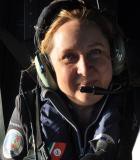
Funzione/Ruolo
Dirigente di Ricerca dell'Istituto Nazionale di Geofisica e Vulcanologia (INGV), Sezione Catania - Osservatorio Etneo
Percorso professionale
Dopo essersi laureata in geologia presso l'Università della Calabria, Sonia Calvari consegue un dottorato di ricerca in Pericolosità Vulcanica presso l'Università di Lancaster, in Inghilterra. La sua attività professionale inizia all'interno dell'Istituto Internazionale di Vulcanologia a Catania, un istituto del Consiglio Nazionale delle Ricerche (CNR) di cui fa parte dal 1987 al 1999, anno in cui questo e altri istituti del CNR che si interessavano di sismicità e vulcani sono confluiti nell'INGV. Lavora all'INGV dal 1999 ricoprendo diversi incarichi istituzionali: responsabile dell'Unità Funzionale di Vulcanologia e Geochimica (2002-2009); responsabile della Tematica Trasversale Coordinata (TTC) inerente la Sorveglianza dei vulcani attivi (2004-2013).
Risultati scientifici
Sonia Calvari e i suoi colleghi svolgono un costante lavoro di monitoraggio nelle aree vulcaniche italiane e partecipano a studi e ricerche, collaborando anche con ricercatori stranieri e applicando allo studio di vulcani all'estero le tecniche utilizzate in Italia. Gli studi riguardano la geologia dei sistemi vulcanici, con la produzione di carte geologiche e banche dati, la sorveglianza e il monitoraggio dei vulcani attivi, l'osservazione della messa in posto delle colate e dei campi lavici complessi e delle grotte laviche, con valutazioni del grado di pericolosità. I suoi studi includono l'attività esplosiva e parossistica come le fontane di lava, per l'analisi delle quali utilizza dati provenienti da sistemi multiparametrici e multidisciplinari. Si interessa attivamente di divulgazione e ha partecipato a diversi seminari e trasmissioni televisive, sia in Italia sia all'estero, come RAI Explora (RAI Educational), Geo & Geo (RAI3), "La TV delle Scienze", National Geographic, (Discovery Channel), senza dimenticare i suoi contributi a History Channel, CNN, BBC, Endemol UK, SWR (Germania), sempre con l'obiettivo di far conoscere l'attività dell'INGV.
Attività editoriali e pubblicazioni
Sonia Calvari è stata proponente e curatrice, insieme con altri colleghi, di due monografie geofisiche pubblicate dall'American Geophysical Union, di cui la prima riguarda lo studio dell'Etna (Bonaccorso A, Calvari S, Coltelli M, Del Negro C, Falsaperla S (eds), Mt. Etna: Volcano Laboratory. Geophysical Monograph Series, v. 143, 2004), e la seconda è inerente l'eruzione dello Stromoboli del 2002-2003 (Calvari S, Inguaggiato S, Puglisi G, Ripepe M and Rosi M (eds), The Stromboli Volcano: An integrated study of the 2002-2003 Eruption, Geophysical Monograph Series, 182, 2008). È anche autrice, con il professore Tanner, di un libro sui vulcani in lingua inglese pubblicato dal Museo di Storia Naturale di Albuquerque (New Mexico): Tanner LH and Calvari S, Volcanoes: Windows on the Earth. Albuquerque, New Mexico Museum of Natural History and Science, A Division of the Department of Cultural Affairs, 2012.
Sonia Calvari è Associate Editor della rivista Bulletin of Volcanology (dal 2011) ed è autrice di oltre 100 pubblicazioni scientifiche su riviste internazionali, fra cui:
(2016) Calvari S, Intrieri E, Di Traglia F, Bonaccorso A, Casagli A, Cristaldi A.Monitoring crater-wall collapse at active volcanoes: a study of the 12 January 2013 event at Stromboli. Bulletin of Volcanology, 78(5):1-16.
(2016) Cappello A, Ganci G, Calvari S, Pérez NM, Hernández PA, Silva SV et al. Lava flow hazard modeling during the 2014-2015 Fogo eruption, Cape Verde. Journal of Geophysical Research: Solid Earth, 121(4):2290-2303.
(2016) Harris AJL, Carn S, Dehn J, Del Negro C, Guđmundsson MT, Calvari S, et al.Conclusion: recommendations and findings of the RED SEED working group.Geological Society, London, Special Publications 426, SP426, 11.
(2015) Slatcher N, James MR, Calvari S, Ganci G, Browning J. Quantifying effusion rates at active volcanoes through integrated time-lapse laser scanning and photography. Remote Sensing, 7(11):14967-14987.
(2015) Marotta E, Calvari S, Cristaldi A, D'Auria L, Di Vito MA, Moretti R, Peluso R. Reactivation of Stromboli's summit craters at the end of the 2007 effusive eruption detected by thermal surveys and seismicity. Journal of Geophysical Research: Solid Earth, 120(11):7376-7395.
(2015) Bonaccorso A, Calvari S, Boschi E. Hazard mitigation and crisis management during major flank eruptions at Etna volcano: reporting on real experience.Geological Society, London, Special Publications 426, SP426, 4.
(2014) Hernández PA, Calvari S, Ramos A, Pérez NM, Márquez A, et al. Magma emission rates from shallow submarine eruptions using airborne thermal imaging.Remote Sensing of Environment, 154:219-225.
(2014) Bonaccorso A, Calvari S, Linde A, Sacks S. Eruptive processes leading to the most explosive lava fountain at Etna volcano: The 23 November 2013 episode. Geophysical Research Letters, 41(14):4912-4919.
(2014) Calvari S, Bonaccorso A, Madonia P, Neri M, Liuzzo M, Salerno GG, et al, Major eruptive style changes induced by structural modifications of a shallow conduit system: the 2007-2012 Stromboli case. Bulletin of volcanology, 76(7):1-15.
(2013) Spampinato L, Ganci G, Hernandez PA, Calvo D, Tedesco D, Calvari S, Pérez NM, et al. Thermal insights into the dynamics of Nyiragongo lava lake from ground and satellite measurements. Journal of Geophysical Research: Solid Earth, 118(11):5771-5784.
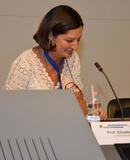
Funzione/Ruolo
Professoressa ordinaria di Paleontologia e Paleoecologia presso l'Università degli Studi di Milano e Presidente della Società Geologica Italiana per il triennio 2015-2017
Percorso professionale
Dopo aver conseguito la laurea in Scienze Geologiche nel 1982, prosegue la sua formazione con un dottorato di ricerca in Scienze della Terra all'Università degli Studi di Milano, nel 1987. Nel biennio 1987-1988 svolge un post dottorato presso il Geologisches Institut, ETH di Zurigo. Nel 1990 è ricercatrice all'Università degli Studi di Milano e l'anno successivo diventa professoressa associata del dipartimento di Scienze della Terra nella stessa università. Dal 2005 è professoressa ordinaria presso lo stesso dipartimento dell'Università degli Studi di Milano.
Risultati scientifici
Elisabetta Erba è specialista di nanofossili calcarei, i massimi produttori di calcite al mondo a dispetto delle loro ridottissime dimensioni. Quando muoiono, precipitano sui fondali marini e nell'arco di milioni di anni formano la maggior parte del sedimento. I nanofossili sono utilizzati per la biostratigrafia (lo studio delle rocce sedimentate e del loro ambiente di deposizione) e per le ricostruzioni paleo-oceanografiche. Elisabetta Erba studia le interazioni tra geosfera, atmosfera, idrosfera e biosfera e, in particolare, i grandi cambiamenti climatici. La sua ricerca si è focalizzata sulle relazioni tra CO2 atmosferica, clima ed ecosistemi oceanici. Per comprendere cause e conseguenze dei cambiamenti climatici attuali e futuri è importante infatti introdurre una prospettiva geologica. I nanofossili sono utilizzati da Elisabetta Erba anche per studiare la natura e l'origine della sapropelite, sostanza nerastra formata in prevalenza dal deposito, in acque stagnanti, di gusci di microrganismi e di alghe unicellulari in putrefazione dalle quali deriva il petrolio.
Attività editoriali e pubblicazioni
È autrice di più di numerose pubblicazioni tra cui:
(2018) Gambacorta G., Malinverno A. and Erba E, Orbital forcing of carbonate versus siliceous productivity in the late Albian–early Turonian (Umbria-Marche Basin, central Italy). Newsletters on Stratigraphy.
(2018) Bottini C. & Erba E., Mid-Cretaceous paleoenvironmental changes in the western Tethys. Climate of the Past, 14: 1147–1163.
(2017) Faucher, G., Hoffmann, L., Bach, L. T., Bottini, C., Erba, E., and Riebesell, U., Impact of trace metal concentrations on coccolithophore growth and morphology: laboratory simulations of Cretaceous stress. Biogeosciences , 14: 3603-3613 doi.org/10.5194/bg-14-3603-2017.
(2015) Erba E, Duncan RA, Bottini C, Tiraboschi D. Weissert H, Jenkyns HC, Malinverno A. Environmental Consequences of Ontong Java Plateau and Kerguelen Plateau Volcanism. Geological Society of America, Special Paper 511:271-303.
(2010) Erba E, Bottini C, Weissert HJ, Keller CE. Calcareous Nannoplankton Response to Surface Water Acidification Around Oceanic Anoxic Event 1a. Science, 329:428-432.
(2006) Erba E. The first 150 million years history of calcareous nannoplankton: biosphere-geosphere interactions. Palaeogeography Palaeoclimatology Palaeoecology, 232:237-250.
(2005) Muttoni G, Erba E, Kent DV & Bachtadse V. Mesozoic alpine facies deposition as a result of past latitudinal plate motion. Nature, 434:59-63.
(2004) Erba E. Calcareous nannofossils and Mesozoic Oceanic Anoxic Events. Marine Micropaleontology, 52:85-106.
(2004) Erba, E, Bartolini A, Larson RL. The Valanginian "Weissert Oceanic Anoxic Event. Geology, 32:149-152.
(2004) Erba E & Tremolada F. Nannofossil carbonate fluxes during the Early Cretaceous: phytoplankton response to nutrification episodes, atmospheric CO2 and anoxia. Paleoceanography, 19.
(2004) Weissert H & Erba E. Volcanism, CO2 and paleoclimate: a Late Jurassic-Early Cretaceous carbon and oxygen isotope record. Journal of the Geological Society of London, 161:695-702.
(1999) Larson RL & Erba E. Onset of the mid-Cretaceous greenhouse in the Barremian-Aptian: Igneous events and the biological, sedimentary and geochemical responses. Paleoceanography, 14:663-678. (1994) Erba E. Nannofossils and superplumes: the Early Aptian nannoconid crisis. Paleoceanography, 9:483-501.
Riconoscimenti e premi
Elisabetta Erba è Presidente della Società Geologica Italiana per il biennio 2015-2017 e dal 2013 è componente dell'Accademia dei Lincei. Dallo stesso anno fa anche parte dell'Academia Europaea (sezione Earth and Cosmic Sciences). Nel 2012 vince il premio Tartufari per le Geoscienze - Accademia Nazionale dei Lincei.

Funzione/Ruolo
Dirigente di ricerca dell'Istituto di Scienze dell'Atmosfera e del Clima del CNR, sezione di Bologna
Percorso professionale
Laureata nel 1985 all'Università degli Studi di Bologna con una tesi in Chimica analitica, consegue il dottorato di ricerca presso il Dipartimento di Chimica dello stesso ateneo, e nel medesimo dipartimento diventa post doc fellow. Nel 1987 è reaserch fellow presso l'Istituto di Fisica Atmosferica del CNR di Bologna, e occupa questa posizione fino al 1992, anno in cui diventa capo del laboratorio dell'Agenzia Regionale per la Protezione Ambientale. Nel 1996 entra nell'Istituto di Fisica e Chimica della Bassa e Alta Atmosfera del CNR di Bologna. Dal 2001 al 2006 è Senior Scientist presso l'Istituto di Scienze Atmosferiche e Oceaniche del CNR. Dal 2007 è dirigente di ricerca dell'Istituto di Scienze dell'Atmosfera e del Clima del CNR, sezione di Bologna.
Risultati scientifici
Gli interessi di ricerca principali di Maria Cristina Facchini sono i processi fisici e chimici nel sistema atmosferico come gli aerosol e le nuvole e i loro effetti sui cambiamenti della composizione atmosferica e del clima. All'inizio della sua carriera scientifica ha indagato le proprietà chimiche di nebbia e nuvole, tanto che il suo primo importante risultato scientifico riguarda la partizione organica dell'aerosol tra gocce di nebbia e aria interstiziale. Sulla base di queste sue ricerche, ha contribuito allo sviluppo di una nuova tecnica di indagine degli aerosol basata sui principi di risonanza magnetica nucleare. Nel 2001 ha contribuito a un documento comune su Science, dove i maggiori esperti mondiali del settore hanno discusso la necessità di rifondare la teoria della formazione di nubi sulla base delle nuove scoperte riguardanti la solubilità degli aerosol e la loro tensione superficiale, nonché sugli effetti dei gas solubili. Le sue ricerche più recenti riguardano l'interazione tra clima e biota (in ecologia, l'insieme di tutti gli esseri viventi, animali e vegetali, che popolano una data regione) marino, atmosferico, aerosol.
Attività editoriali e pubblicazioni
È autrice di più di 150 pubblicazioni scientifiche tra cui:
(2011) Decesari S, Finessi E, Rinaldi M, Paglione M, [...] Facchini MC. Primary and secondary marine organic aerosols over the north atlantic ocean during the map experiment. Journal of Geophysical Research Atmospheres, 116(D22).
(2011) Rinaldi M, Decesari S, Carbone C, [...] Facchini MC.Evidence of a natural marine source of oxalic acid and a possible link to glyoxal. Journal of Geophysical Research Atmospheres, 116(D16).
(2008) Facchini MC, Decesari S, Rinaldi M, et al. An important source of marine secondary organic aerosol from biogenic amines. Environmental Science & Technology, 42:9116-9121.
(2008) Facchini MC, Rinaldi M, Decesari S, et al. Primary submicron marine aerosol dominated by insoluble organic colloids and aggregates. Geophysical Research Letters, 35, L17814.
(2005) Kanakidou M, Seinfeld JH, Pandis SN, Barnes I, Dentener FJ, Facchini MC, et al. Organic aerosol and global climate modelling: a review. Atmospheric Chemistry and Physics, 5:1053-1123.
(2004) O'Dowd CD, Facchini MC, et al. Biogenicallydriven organic contribution to marine aerosol. Nature, 431:676-680.
(2001) Charlson RJ, Seinfeld JH, Nenes A, Kulmala M, Laaksonen M, Facchini MC. Reshaping theory of cloud formation. Science, 292:2025-2026.
(2000) Decesari S, Facchini MC, Fuzzi S & Tagliavini E. Characterization of water soluble organic compounds in atmospheric aerosol: a new approach. Journal of Geophysical Research, 105:1481-1489.
(1999) Facchini MC, Fuzzi S, Zappoli S, et al. Partitioning of the organic aerosol component between fog droplets and interstitial air. Journal of Geophysical Research, 104, 26821-26832.
(1999) Facchini MC, Mircea M, Fuzzi S & Charlson RJ. Cloud albedo enhancement by surface-active organic solutes in growing droplets. Nature, 401:257-259.
Riconoscimenti e premi
Nel 2014 è nella Highly Cited Researchers Rank di Thomson Reuters, classifica dei ricercatori e delle ricercatrici più influenti al mondo. Nello stesso anno riceve il Premio Haagen-Smit Prize. Fa parte di diverse società scientifiche, come l'European Association for Geochemistry, l'European Geophysical Union, l'American Aerosol Society ed è una delle fondatrici della Italian Aerosol Association.
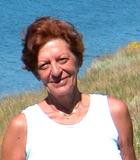
Funzione/Ruolo
Già professoressa ordinaria di Ecologia all'Università di Trieste
Percorso professionale
Dopo la laurea in Scienze Biologiche presso l'Università di Trieste nel 1974, prosegue la sua formazione come borsista in Ecologia nella stessa università fino al 1981. Da quell'anno è ricercatrice, nel 1992 diventa professoressa associata e Responsabile del Laboratorio di Biologia Marina dell'Università di Trieste. Dal 2008 è professoressa ordinaria di Ecologia.
Risultati scientifici
I principali interessi di ricerca di Serena Fonda Umani riguardano la dinamica dell'ecosistema marino, i flussi di carbonio, lo studio dell'ecologia del Plancton e l'ecologia marina microbica. Per poter condurre i suoi studi si è recata in varie zone del Mar Mediterraneo, nello stretto di Magellano (Cile), nella baia di Chesapeake (Usa) e nel Mare di Ross (Antartide). Uno dei principali obiettivi della ricerca di Serena Fonda Umani è la stima dei flussi di carbonio all'interno della catena alimentare pelagico-microbica (dai virus fino alle meduse), per verificare se vi è una selezione esercitata dai predatori sui procarioti (primi organismi cellulari comparsi sulla terra, caratterizzati dall'assenza di un nucleo ben definito). Questo è possibile attraverso l'approccio metagenomico (lo studio delle comunità microbiche direttamente nel loro ambiente naturale) che Serena Fonda Umani e i colleghi utilizzano.
Attività editoriali e pubblicazioni
Autrice di più di oltre 200 pubblicazioni scientifiche nazionali ed internazionali fra cui:
(2016) Zoccarato L, Celussi M, Pallavicini A, Fonda Umani S. Aurelia auritaephyrae reshape a coastal microbial community. c 7:749.
(2015) Caruso G, La Ferla R, Leonardi M, Zaccone R, Azzaro F, Azzaro M, Decembrini F, Maimone G, Monticelli L, Caroppo C, Cavallo RA, Acquaviva MI, Narracci M, Stabili L, Marino G, Petochi T, De Angelis R, Zoppini A, Fonda Umani S, Del Negro P, Todorova NH, Karamfilov VK, Corinaldesi C, Rastelli E, Cappello S, Latini M, Danovaro R. Microbial assemblages for environmental quality assessment: knowledge, gaps and usefulness in the European Marine Strategy Framework Directive. Critical Reviews in Microbiology
(2013) Di Poi E, Blason C, Corinaldesi, Danovaro R, Malisana E, Fonda Umani S. Structure and interactions within the pelagic microbial food web(from viruses to microplankton)across environmental gradients in the Mediterranean Sea. Global Biogeochemical Cycles, 27: 1034-1045.
(2012) Giani M, Djakovac T, Degobbis D, Cozzi S, Solidoro C, Fonda Umani S. Recent changes in the marine ecosystems of the northern Adriatic Sea. Estuarines, Coastal and Shelf Sciences, 115:1-13.
(2012) Fonda Umani S, Malfatti F, Del Negro P. Carbon fluxes in the pelagic ecosystem of the Gulf of Trieste (Northern Adriatic Sea). Estuarines, Coastal and Shelf Sciences, 115:170-186.
(2010) Fonda Umani S, Malisana E, Focaracci F, Magagnini M, Corinaldesi C, Danovaro R. Disentangling the impact of viruses and nanoflagellates on prokaryotes in bathypelagic waters of the Mediterranean Sea. Marine Ecology Progress Series, 418:73-85.
(2010) Mozetič P, Solidoro C, Cossarini G, Socal G, Precali R, Francé J, Bianchi F, Smodlaka N, De Vittor C, Fonda Umani S. Recent trends towards oligotrophication of the northern Adriatic: evidence from chlorophyll a time series. Estuaries and Coasts, 33:362-375.
(2009) Danovaro R, Fonda Umani S, Pusceddu A. Climate Change and the potential spreading of marine mucilage and microbial pathogens in the Mediterranean Sea. PLoS ONE, 4(9):e7006.
(2007) Fonda Umani S, Del Negro P, Larato C, De Vittor C, Cabrini M, Celio M, Falconi C, Tamberlich F, Azam F. Major inter-annual variations in microbial dynamics in the Gulf of Trieste (Northern Adriatic Sea) and their ecosystem implications. Aquatic Microbial Ecology Journal, 46:163-175.
(2005) Fonda Umani S, Milani L, Borme D, de Olazabal A, Parlato S, Precali R, Kraus R, Lucic D, Njire J, Totti C, Romagnoli T, Pompei M, Cangini M. Inter-annual variations of planktonic food webs in the northern Adriatic Sea. Science of the Total Environment, 353(1-3):218-231.
Riconoscimenti e premi
Serena Fonda Umani è membro di numerose società e comitati scientifici fra cui il Comitato Scientifico del Parco del Mare (dal 2005) e della Società Italiana di Ecologia (SItE) di cui nel 2012 è stata eletta Presidente.

Funzione/Ruolo
Ricercatrice associata all'Istituto Nazionale di Oceanografia e di Geofisica Sperimentale (OGS) di Trieste
Percorso professionale
Dopo la laurea in Scienze Biologiche all'Università di Siena nel 1977, dal 1977-1979 svolge un tirocinio come allieva laureata interna presso l'Istituto di Anatomia Comparata (Laboratorio di Idrobiologia) dell'Università di Siena. Dal 1980 al 1982 è socia della Cooperativa di Biologia Marina, Idrobiologia e Acquacoltura, "Coipa" (Roma). L'anno successivo è ricercatrice alla Stazione Zoologica Anton Dohrn di Napoli, presso il Laboratorio di Ecologia del Benthos con sede a Villa Dohrn, Ischia. Nel 1986 svolge un post-doc alla School of Oceanography dell'Università di Washington e ai Friday Harbor Laboratories. Dal 1992 è prima ricercatrice della Stazione Zoologica Anton Dohrn. Nel 2014 consegue l'abilitazione scientifica nazionale per Ecologia (professoressa ordinaria) e Zoologia (professoressa associata). Dal febbraio 2021 è ricercatrice associata all'Istituto Nazionale di Oceanografia e di Geofisica Sperimentale (OGS) di Trieste.
Risultati scientifici
Le ricerche di Maria Cristina Gambi sono finalizzate allo studio della diversità e della biologia evolutiva ed ecologia dei policheti (uno dei gruppi più abbondanti e diversificati degli habitat marini che comprendono circa 13mila specie) e del loro ruolo come bioindicatori e nel funzionamento dei biotopi costieri. In questo ambito vengono anche studiate specie aliene di policheti, il loro ciclo vitale e la dinamica di colonizzazione del Mediterraneo. L'identificazione di specie chiave di policheti resistenti a diversi fattori di stress collegati al cambiamento climatico, in particolare l'acidificazione marina, permette di utilizzare queste specie come modelli per lo studio di acclimatazione ed adattamento alle condizioni locali dell'ambiente. L'attività sperimentale su policheti e zoobenthos è svolta sia in laboratorio che in situ, utilizzando alcuni sistemi sommersi di origine vulcanica come laboratori naturali, in quanto naturalmente acidificati e senza variazioni di temperatura o salinità. Nell'ambito delle sue ricerche Maria Cristina Gambi ha descritto 16 specie di policheti nuove per la scienza e un nuovo e peculiare gruppo di detritivori (organismi consumatori di detriti) nel sistema Posidonia oceanica del Mediterraneo e Thalassia testudinum dei Caraibi. Ha rilevato e studiato per la prima volta l'effetto delle heat-waves (ondate di calore) nel Golfo di Napoli e ha identificato specie chiave di policheti come possibili modelli per lo studio del cambiamento climatico. Ha inoltre descritto comunità bentoniche peculiari (organismi acquatici che vivono in stretto contatto con il fondo o fissati a un substrato solido) nei fondali costieri di Baia Terra Nova (Antartide).
Attività editoriali e pubblicazioni
Dal 2005 al 2013 è Editor della rivista Marine Ecology e dal 2014 a oggi è Associate Editor della rivista International Journal Marine Ecology
È autrice di numerose pubblicazioni scientifiche, compresi alcuni libri, e ha curato vari numeri speciali di Marine Ecology. Le pubblicazioni più recenti e rilevanti sono elencate di seguito:
(2018) Teixido N, Gambi MC, Parravicini V, Kroeker K, Micheli F, Villeger S, Ballesteros E. Functional biodiversity loss along natural CO2 gradients. Nature Communications, 9(1). DOI.10.1038/s41467-018-07592-1.
(2018) Foo SA, Byrne M, Ricevuto E, Gambi MC. The carbon dioxide vents of Ischia, Italy, a natural laboratory to assess impacts of ocean acidification on marine ecosystems: an overview of research and comparisons with other vent systems. Oceanography and Marine Biology: An Annual Review, 56, 237-310
(2017) Vizzini S, Martínez-Crego B, Andolina C, Massa-Gallucci A, Connell SD, Gambi MC. Ocean acidification as a driver of community simplification via the collapse of higher-order and rise of lower-order consumers. Scientific Report 7, 4018.
(2013) Kroeker K, Micheli F, Gambi MC. Ocean acidification causes ecosystem shifts via altered competitive interactions. Nature Climate Change, 3, 156-159.
(2013) Kroeker KJ, Gambi MC, Micheli F. Altered recovery dynamics result in homogenous assemblages in an acidified ocean. Proceedings of the National Academy of Sciences, USA (PNAS), 110 (31): 12721-12726.
(2011) Kroeker KJ, Micheli F, Gambi MC, Martz TR. Divergent ecosystem responses within a benthic marine community to ocean acidification. Proceedings of the National Academy of Sciences USA (PNAS), 108 (35), 14515-14520.
Riconoscimenti e premi
Fa parte della Società Italiana di Biologia Marina (S.I.B.M.), dell'Unione Zoologica Italiana (U.Z.I.), dell'Associazione Italiana di Oceanologia e Limnologia (A.I.O.L.), della Società Italiana di Ecologia (S.It.E.).
Inoltre è componente associata del gruppo GOSSOE (Group of Specialists of Southern Ocean Ecology) dello S.C.A.R.-S.C.O.R.
Dal 1992 al 2001 è stata rappresentante nazionale del Comitato Direttivo dell'International Polychaete Association (I.P.A.) (1992-2001) e dal 2001 al 2004 ne è stata Presidente.

Area STEM: Scienze naturali e ambientali
Competenze: sismologia storica, storia dell'ingegneria, vulcanologia storica
Parole chiave: archeosismologia, disastri sismici, eruzioni vulcaniche, maremoti, pericolosità sismica, ricostruzioni post disastri sismici, sistemi antisismici storici, terremoti, variazioni climatiche
Regione: Emilia-Romagna
Funzione/Ruolo
Associata alla ricerca di INGV- Istituto Nazionale di Geofisica e Vulcanologia, Roma, Sezione Sismologia e Tettonofisica. Già Dirigente di ricerca di ruolo a INGV di Bologna. Coordinatrice delle attività multidisciplinari del Centro euro-mediterraneo di documentazione Eventi Estremi e Disastri.
Percorso professionale
Storica medievista di formazione (Università di Bologna) e sismologa storica, da oltre trenta anni sviluppa ricerche storiche su terremoti, maremoti ed eruzioni vulcaniche riguardanti l’Italia e l’area mediterranea, finalizzando i risultati alle Scienze della Terra (sismologia, vulcanologia e climatologia) e alla storia dell'ingegneria.
Ha svolto e svolge la sua attività di ricerca come responsabile di progetti nazionali e come studiosa. Responsabile scientifica della società di ricerca SGA, Storia Geofisica Ambiente di Bologna (1983-2006), poi dirigente di ricerca di ruolo all’Istituto Nazionale di Geofisica e Vulcanologia (INGV) fono al 2011. Dal 2012 coordina le attività multidisciplinari di EEDIs (Eventi estremi e disastri, Centro euro-mediterraneo di documentazione), finalizzate sia alla divulgazione scientifica, sia a nuove ricerche.
Consulente della IAEA (International Atomic Energy Agency – ONU) per la sismicità dell'Africa settentrionale e dell'Armenia, ha contribuito a migliorare le conoscenze sulla pericolosità sismica di queste aree con specifiche ricerche e relative pubblicazioni.
Impegnata nel tema cruciale del rischio da eventi naturali estremi e nello studio dei loro impatti nel lungo periodo, ha scritto diversi libri di divulgazione scientifica entrati nel dibattito nazionale.
Risultati scientifici
Emanuela Guidoboni ha progettato e diretto tutte le ricerche storiche per il Catalogo dei Forti Terremoti in Italia e nell’area mediterranea (CFTI), dal mondo antico al XX secolo (edizioni 1995, 1997, 2000, 2007, 2018). La presentazione dell’architettura e dei contenuti di questo Web-GIS, basilare per le valutazioni della pericolosità sismica, è stata pubblicata nel 2019 su Nature.
Il metodo applicato alla ricerca storica finalizzata alla sismologia ha definito una neo-disciplina d’interesse internazionale, la Sismologia storica, di cui Emanuela Guidoboni ha pubblicato nel 2009 il primo manuale, assieme a John Ebel: "Earthquakes and Tsunamis in the Past. A Guide to Techniques in Historical Seismology" (Cambridge University Press, 2009).
Ha approfondito le conoscenze sui terremoti e maremoti antichi e medievali dell’Italia e dell’area mediterranea, facendo emergere l'impatto di tali eventi nel mondo abitato, mettendo in luce numerosi eventi prima sconosciuti ed elaborando i nuovi parametri sismici. I risultati sono pubblicati in "Catalogue of Ancient Earthquakes in the Mediterranean area up to 10th century", con A.Comastri e G.Traina (1994); e in "Catalogue of Earthquakes and Tsunamis in the Mediterranean area from the 11th to the 15th century", con A. Comastri (2005).
Attività editoriali e pubblicazioni
Emanuela Guidoboni è autrice di oltre 200 pubblicazioni scientifiche.
Fra gli articoli in riviste internazionali e contributi in opere nazionali, si segnalano i seguenti lavori relativi agli ultimi dieci anni.
(2021) Valensise G., Guidoboni E., Iervolino I. What is an exceptional earthquake? Seismological Reseaerch Letters.
(2019) Guidoboni E. Azzardo sismico, vulnerabilità e ricostruzioni nei centri storici italiani, in “Dopo la catastrofe”, a cura di C. Belmonte, E. Scirocco, G. Wolf, G. Wolf, Kunsthistorisches Institut in Florenz - Max-Planck-Institut, Roma, pp. 30-44.
(2018) Guidoboni E. Florence: the effects of earthquakes on the artistic heritage. Method and historical sources (15th-20thcenturies), pp. 267-277; Florence: a first concise dossier of seismic effect on artistic heritage (15th-20th centuries), pp. 279-300, in "3rd International Conference, AISI", a cura di S. D'Agostino, vol I, 2018, Napoli.
(2017) Guidoboni E. Disastri sismici e ricostruzioni nella storia d’Italia: l'azzardo sismico in un nodo non risolto in “Building Back Better: idee per ricostruire meglio. Individui e comunità, manufatti e paesaggio”- Sendai 2015-2030 (Nazioni Unite,) a cura di F. Esposito, M. Russo, Carrocci, Roma.
(2016) Guidoboni E. Erdbeben und Seebeben im antiken Mittelmeerraum. Gründe für einen Dialog zwischen Seismologie und Geschichte, in “Erdbeben in der Antike”, Deutungen – Folgen – Repräsentationen, herausgegeben von J. Borsch und L.Carrara, Mohr Siebec, Tubingen Univ.
(2015) Guidoboni E. When Towns Collapse: Images of Earthquakes, Floods, and Eruptions in Italy. Fifteenth – Nineteenth Centuries, in “Wounded Cities: The Representation of Urban Disasters in European Art (14th–20th Centuries)”, a cura di M. Folin e M. Preti, cap. 2, Koninklijke Brill, NY– Leiden, pp. 33-56.
(2015) Guidoboni E., Valensise G. On the complexity of earthquake sequences: a historical seismology perspective based onthe L'Aquila seismicity (Abruzzo, Central Italy), 1315-1915. Earthquakes and Structures, 8(1): 153-184.
Fra i libri e le monografie si segnalano:
(2019) Guidoboni E., Poirier J.-P. Storia culturale del terremoto dal mondo antico a oggi, Rubettino.
(2015) Guidoboni E., Mulargia F., Teti V. Prevedibile / Imprevedibile. Eventi estremi nel prossimo futuro, Rubbettino.
(2014) Guidoboni E., Valensise G. (a cura di) L’Italia dei disastri. Dati e riflessioni sugli impatti degli eventi naturali (1861-2013), Bononia University Press.
(2011) Guidoboni E., Valensise G. Il peso economico e sociale dei disastri sismici in Italia negli ultimi 150 anni (1861-2011), Bononia University Press, Bologna.
(2011) Guidoboni E., Navarra A., Boschi E. The Spiral of Climate. Civilizations of the Mediterranean and Climate Change in History, Bononia University Press, Bologna.
Riconoscimenti e premi
Nel 2004 viene nominata membro dell'Academia Europaeaper l'approccio multidisciplinare alla pericolosità sismica e vulcanica.
Nel 2016 vince il primo Premio Maiella per la Saggistica ambientale con il libro Prevedibile / Imprevedibile. Eventi estremi nel prossimo futuro (Rubbettino).
Nel 2017 è nominata associata alla ricerca dell'INGV, Roa.
Nel 2020 è nominata membro del Comitato Scientifico e di quello Direttivo dell'Associazione Internazionale di Storia dell'Ingegneria.
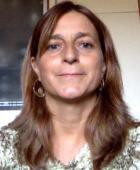
Funzione/Ruolo
Prima ricercatrice all’Istituto Nazionale di Geofisica e Vulcanologia, Centro Nazionale Terremoti; Responsabile dell’analisi dati per la sorveglianza e il monitoraggio sismico
Percorso professionale
Dopo la laurea in Geologia all’Università degli Studi di Roma La Sapienza nel 1991, prosegue gli studi attraverso una borsa di specializzazione all’estero in Sismologia presso lo United States Geological Survey di Menlo Park, CA, USA nel 1992- 1993. Nel 1994 continua la specializzazione presso l’Università degli studi de L’Aquila, dipartimento di Fisica e poi presso l’Istituto Nazionale di Geofisica (ING) di Roma che nel 2000 diventa Istituto Nazionale di Geofisica e Vulcanologia (INGV). Prosegue all’INGV la sua formazione e le sue ricerche prima come ricercatrice a contratto, poi come ricercatrice e nel 2003 come prima ricercatrice. Dal 1998 svolge i turni di sorveglianza sismica prima come turnista responsabile della Sala operativa, con il compito di allertare la Protezione Civile, servizio interrotto durante i periodi di maternità nel 2000 e nel 2002; poi nel 2015 si qualifica come turnista per allerta tsunami e infine oggi svolge i turni come funzionaria responsabile della comunicazione verso il Dipartimento di Protezione Civile (DPC).
Dal 2007 al 2014 è stata responsabile di un gruppo di ricerca costituito da 25 ricercatori che si occupano di sismologia e struttura dell’interno della terra, dal 2014 è responsabile di un gruppo di tecnici e ricercatori che si occupano dell’analisi dati per la sorveglianza e il monitoraggio sismico. Tra il 2009 ed il 2013 è stata coordinatrice della rete sismica mobile del Centro Nazionale Terremoti si è quindi occupata della organizzazione di attività di pronto intervento sismico. Ha coordinato importanti gruppi di lavoro in progetti nazionali e internazionali che hanno coinvolti istituti e Università Italiane, Europee e Statunitensi quali il progetto RETREAT (2002-2007), il progetto Messina 1908-2008 (2007-2009), il progetto INGV-DPC Test sites per il monitoraggio multidisciplinari di dettaglio (2007-2009), il progetto AlpArray (2015-2018). È responsabile di alcune delle attività che INGV svolge per il DPC e dell’accordo quadro con la Agenzia di Protezione Civile della Regione Lazio. Partecipa da sempre alle attività di divulgazione ed informazione dell’INGV rivolte alle scuole, al pubblico e ai media.
Risultati scientifici
I suoi interessi scientifici si sono concentrati negli ultimi anni sull’’analisi di sequenze sismiche per l’individuazione delle faglie attive e lo studio delle possibili variazione delle caratteristiche della crosta terrestre durante l’occorrenza delle sequenze stesse. Da circa 15 anni si occupa dell’analisi della birifrangenza delle onde sismiche per definire l’anisotropia sismica e lo stato di deformazione della crosta e del mantello terrestre. Questa analisi permette di caratterizzare il campo di fratturazione crostale e definire le sue relazioni con il campo di sforzo attivo e con la presenza di fluidi. La caratterizzazione dell’anisotropia sismica, quando fatta su onde che attraversano il mantello terrestre, ci consente invece di formulare modelli geodinamici a scala regionale: la zona di subduzione del tirreno meridionale, li dove la placca ionica scende al di sotto dell’arco calabro è stata la prima regione del mantello terrestre dove è stato osservato un flusso toroidale del mantello ai bordi della placca in subduzione (Civello e Margheriti 2004). Durante gli anni della formazione si è occupata dello studio degli effetti di sito cioè di come le onde sismiche vengono amplificate e modificate dalla geologia di superficie specialmente quando si hanno depositi incoerenti siano essi fluviali o di versante, e dalla conformazione topografica dell’area attraversata dallo scuotimento sismico. Nel 1993 è stata tra le prime a utilizzare le registrazioni delle vibrazioni ambientali (noise sismico) per caratterizzare la risposta di siti che avevano registrato il terremoto di San Francisco del 1989.
Attività editoriali e pubblicazioni
È autrice di circa 70 pubblicazioni scientifiche internazionali, tra cui:
(2016) Baccheschi P, Pastori M, Margheriti L, Piccinini D. Shear wave splitting of the 2009 L'Aquila seismic sequence: fluid saturated microcracks and crustal fractures in the Abruzzi region (Central Apennines, Italy). Geophysical Journal International, 204 (3): 1531-1549.doi: 10.1093/gji/ggv536
(2014) Margheriti L, Lucente FP, Park J, Pondrelli S, Levin V, Steckler MS, Baccheschi P, Salimbeni S. Large-scale coherent anisotropy of upper mantle beneath the Italian peninsula comparing quasi-Love waves and SKS splitting. Journal of Geodynamics, DOI: 10.1016/j.jog.2014.07.007
(2014) Govoni A, Marchetti A, De Gori P, Di Bona M, Pio Lucente F, Improta L, Chiarabba C, Nardi A, Margheriti L, Piana Agostinetti N, Di Giovambattista R, Latorre D, Anselmi M, Ciaccio MG, Moretti M, Castellano C, Piccinini D. The 2012 Emilia seismic sequence (Northern Italy): Imaging the thrust fault system by accurate aftershocks location Tectonophysics. http://dx.doi.org/10.1016/j.tecto.2014.02.013
(2013) Salimbeni S, Pondrelli S, Margheriti L. (2013). Hints on the deformation penetration induced by subductions and collision processes: Seismic anisotropy beneath the Adria region (Central Mediterranean).Journal of Geophysical Research: Solid Earth, DOI: 10.1002/2013JB010253
(2011) Baccheschi P, Margheriti L, Steckler M S & Boschi E. Anisotropy patterns in the subducting lithosphere and in the mantle wedge: A case study—The southern Italy subduction system. Journal of Geophysical Research, 116, B08306.
(2010) Lucente FP, Gori PD, Margheriti L, Piccinini D, Bona MD, Chiarabba C, Agostinetti NP. Temporal variation of seismic velocity and anisotropy before the 2009 MW 6.3 L'Aquila earthquake. Italy: Geology, 38:1015–1018, doi: 10.1130/G31463.1.
(2004) Civello S and Margheriti L. Toroidal mantle flow around the Calabrian slab (Italy) from SKS splitting, Geophysical Reserach Letters, 31, L10601, doi:10.1029/2004GL019607.
(2000) Margheriti L, Azzara MR, Cocco M, Delladio A and Nardi A. Analysis of borehole broad-band recordings: Test sute in the Po basin, Northern Italy. Bulletin of the Seismological Society of America, 90, 6:1454-1463.
(1996) Margheriti L, Nostro C, Cocco M and Amato A. Seismic anisotropy beneath the northern Apennines (Italy) and its tectonic implications. Geophysical Reserach Letters, 23; 20:2721-2724.
(1994) Margheriti L, Boatwright J, Wennerberg L. A comparison of Coda and S-wave spectral ratios as estimates of site response in the Southern San Francisco Bay area. Bulletin of the Seismological Society of America, 84, 6:1815-1830.
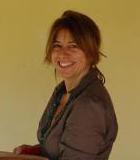
Funzione/Ruolo
Professoressa ordinaria di Geodesia e Geomatica nei Corsi di Laurea in Ingegneria Civile Sicurezza e Protezione Civile e Aerospaziale all’Università di Roma La Sapienza; CEO di SurveyLAb srl
Percorso professionale
Dopo la laura in Fisica nel 1987 con una tesi sulla missione satellitare LAGEOS per lo studio dei Movimenti Crostali nell’Area del Mediterraneo prosegue la sua formazione con un dottorato di ricerca presso l’Università degli studi di Bologna in Scienze Geodetiche e Topografiche, discutendo una tesi sulle Tecniche della Geodesia Spaziale (SLR E GPS) applicate allo Studio delle Deformazioni. Nel 1992 diventa ricercatrice presso l’Università di Roma Sapienza Dal 1003 al 1005 è Visiting Scientist presso l’USGS a Reston (Virginia), dove lavora su progetti per l’integrazione dati GPS/INS per la georeferenziazione di dati acquisiti tramite rilievi aerei. Dal 2001 è professoressa associata alla Facoltà di Ingegneria Civile e Industriale dell'Università di Roma La Sapienza e dal 2020 professoressa ordinaria al Dipartimento di Ingegneria Civile Edile e Ambientale, dello stesso Ateneo.
Durante la sua carriera accademica tiene corsi di Alta Formazione su Image Analysis Remote Sensing Techniques e GIS e su Tecniche di rilievo aeree per le catastrofi naturali e fa parte del Collegio Docenti del Dottorato in Geoinformazione dell’Università di Tor Vergata. Attualmente partecipa al Dottorato in Ingegneria delle Infrastrutture e Trasporti della Sapienza.
Nel 2008 fonda lo spin-off della Sapienza Survey Lab dedicato allo sviluppo di sistemi innovativi per il controllo del territorio e delle infrastrutture civili utilizzando sensori in situ e osservazioni satellitari (GNSS e DInSAR). Attualmente è CEO di Survey Lab.
Risultati scientifici
L’attività principale di Maria Marsella è la ricerca sulle tecniche geodetiche e geomatiche per il monitoraggio del territorio e la tutela delle infrastrutture civili. È esperta nell’acquisizione ed elaborazione di dati di osservazione della terra con sensori ottici e SAR e di dati di geodesia spaziale. Ha condotto studi e ricerche per lo sviluppo di modelli interpretatavi e previsionali in aree soggette a rischio idrogeologico e in aree vulcaniche attive, basandosi sull’integrazione di dati di telerilevamento aereo e satellitare con misure in situ. Ha coordinato numerosi progetti di ricerca finanziati da enti nazionali quali il MIUR, l’Agenzia Spaziale Italiana, il Diartimento Protezione Civile dell’Istituto Nazionale di Geofisica e Vulcanologia, e progetti europei nell’ambito dei programmi EU FP7 e H2020.
Attività editoriali e pubblicazioni
E’ autrice di oltre cento pubblicazioni fra cui:
(2016) Scifoni S, Bonano M, Marsella M, Sonnessa A, Tagliafierro V, Manunta M. On the joint exploitation of long-term DInSAR time series and geological information for the investigation of ground settlements in the town of Roma (Italy). Remote Sensing of Environment, 182:113-127 3.
(2015) Palenzuela JA, Marsella M, Nardinocchi C, Pérez JL, Fernández T. Landslide detection and inventory by integrating LiDAR data in a GIS environment. Landslides, 12(6):1035-1050,9.
(2015) Marsella M, D’Aranno PJV, Scifoni S, Sonnessa A, Corsetti M. Terrestrial laser scanning survey in support of unstable slopes analysis: the case of Vulcano Island (Italy). Natural Hazards, 78(1):443-459,5.
(2012) Marsella M, Baldi P, Coltelli M, Fabris M.The morphological evolution of the Sciara del Fuoco since 1868: reconstructing the effusive activity at Stromboli volcano. Bulletin of Volcanology, 74,1:231-248.
(2009) Proietti C, Coltelli M, Marsella M, Fujita E. A quantitative approach for evaluating lava flow simulation reliability: LavaSIM code applied to the 2001 Etna eruption. Geochemistry Geophysics Geosystems,10,9.
(2008) Manunta M, Marsella M, Zeni G, Sciotti M, Atzori S, Lanari R. Two-scale surface deformation analysis using the SBAS-DInSAR technique: a case study of the city of Rome Italy.International Journal of Remote Sensing, 29,6:1665-1684.
(2008) Baldi P, Coltelli M, Fabris M, Marsella M, Tommasi P. High precision photogrammetry for monitoring the evolution of the NW flank of Stromboli volcano during and after the 2002-2003 eruption. Bulletin of Volcanology, 70,6:703-715.
(2007) Vicari A, Herault A, Del Negro C, Coltelli M, Marsella M, Proietti C. Modeling of the 2001 lava flow at Etna volcano by a cellular automata approach. Environmental Modelling & Software, 22,10:1465-1471.
(2005) Baldi P, Fabris M, Marsella M, Monticelli R. Monitoring the morphological evolution of the Sciara del Fuoco during the 2002 - 2003 Stromboli eruption using multi-temporal photogrammetry. ISPRS, Journal of Photogrammetry and Remote Sensing, 59,4:199-211.
(2002) Baldi P, Bonvalot S, Briole P, Coltelli M, Gwinner K, Marsella M, Puglisi G, Remy D. Validation and comparison of different techniques for the derivation of digital elevation models and volcanic monitoring (Vulcano Island Italy). International Journal of Remote Sensing, 23,22:4783-4800.
Riconoscimenti e premi
Nel 2017 viene chiamata a far parte del Comitato Tecnico Scientifico per il Commissario del Governo per la ricostruzione nei territori interessati dal sisma del 24 agosto 2016 presso la Presidenza del Consiglio dei Ministri.
Nel marzo 2016 Survey Lab, di cui è CEO, ha vinto la Call H2020 SME Instrument-Phase II-Space con il progetto IMODI (Monitorare con i satelliti la stabilità di edifici e infrastrutture).
Dal 2011 al 2014 è stata esperta per la Valutazione della Qualità della Ricerca (VQR-ANVUR).
Fra il 2002 e il 2013 è stata esperta valutatrice di progetti per la Call Aeronautica e Spazio dei programmi quadro per lo sviluppo tecnologico della Commissione Europea FP6 e FP7.
Nel 2002 e 2003 e poi ancora nel 2017 ha collaborato con il Dipartimento di Protezione Civile Nazionale per la gestione delle Emergenze Stromboli 2002-03 e 2017.
Fa parte del Consiglio Direttivo del Centro di Ricerca Aerospaziale della Sapienza (CRAS).
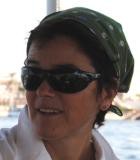
Funzione/Ruolo
Direttrice della Struttura Terremoti dell'Istituto Nazionale di Geofisica e Vulcanologia sezione di Roma
Percorso professionale
Dopo la laurea in Geologia all'università di Roma La Sapienza nel 1985, consegue l'abilitazione alla professione di geologa nel 1986. Lavora in seguito al Servizio Geologico d'Italia; dal 1987 è ricercatrice presso l'Istituto Nazionale di Geofisica e Vulcanologia di Roma, e nel 2000 assume la carica di Dirigente di Ricerca. Nel 1991-1992 e nel 1997-1998 è visiting scientist presso l'United States Geological Service di Menlo Park. in California. Dal 2013 decide di ridurre le proprie attività di ricerca per mettersi al servizio dell'INGV, ricoprendo ruoli di responsabilità e gestione interna. Dal 2013 al 2016 è direttrice della Sezione Roma1, Sismologia e Tettonofisica. Attualmente dirige la Struttura Terremoti con compiti di programmazione, sviluppo e verifica delle attività di ricerca.
Risultati scientifici
Il principale ambito di ricerca di Daniela Pantosti è la Geologia dei Terremoti e Paleosismologia (studio delle registrazioni geologiche dei terremoti del passato, attività di ricerca che offrono un contributo importante alle stime di pericolosità sismica. Queste discipline, che si occupano di caratterizzare la sismicità di una regione sulla base delle "impronte" lasciate dai terremoti del passato sul paesaggio e nella geologia, erano del tutto nuove in Italia alla fine degli anni Ottanta. Grazie al supporto dell'INGV, Daniela Pantosti ha potuto introdurle anche nel nostro Paese, utilizzandole per la prima volta per lo studio della faglia dell'Irpinia responsabile del terremoto del 1980. Attraverso l'osservazione dello sviluppo di modelli di segmentazione e ricorrenza delle faglie, della caratterizzazione delle sorgenti sismogenetiche e del loro comportamento sismico infatti risulta molto più attendibile la stima della pericolosità sismica. Visti gli ottimi risultati, questi studi si sono enormemente sviluppati e sono entrati a far parte integrante del percorso scientifico. Anche in seguito di questi successi, Pantosti ha partecipato ed è stata responsabile di progetti nazionali e internazionali riguardanti la definizione di pericolosità sismica e da tsunami in Italia, nel Mediterraneo, in California, nel Centro e Sud America e in Nuova Zelanda.
Attività editoriali e pubblicazioni
Daniela Pantosti è editrice associata per varie riviste scientifiche come Tectonophysics, Bulletin of the Seismological Society of America, Journal of Earthquake Engineering, Italian Journal of Geosciences.
È inoltre autrice di oltre numerose pubblicazioni scientifiche, tra cui:
(2018) Villani, F., Pucci, S., Civico, R., De Martini,P. M., Cinti, F. R., & Pantosti, D. Surface Faulting of the 30 October 2016 Mw 6.5 Central Italy Earthquake: Detailed Analysis of a Complex Coseismic Rupture, Tectonics, 37(10): 3378-3410.
(2018) Cinti, F. R., Civico, R., Blumetti, A. M.,Chiarini, E., La Posta, E., Pantosti, D., et al. Evidence for surface faulting earthquakes on the Montereale fault system (Abruzzi Apennines, central Italy). Tectonics, 37(9): 2758–2776.
(2017) Villani, F., L. Improta, S. Pucci, R. Civico, P.P.G. Bruno and D. Pantosti. Investigating the architecture of the Paganica Fault (2009 Mw 6.1earthquake, central Italy) by integrating high-resolution multiscale refraction tomography and detailed geological mapping, Geophysical Journal International, 208(1): 403–423.
(2016) Emergeo W.G.: Pucci S. , De Martini P.M. , Civico R. , Nappi R. , Ricci T. , Villani F. , Brunori C.A. , Caciagli M. , Sapia V. , Cinti F. R. , Moro M. , Di Naccio D. , Gori S. , Falcucci E. , Vallone R. , Mazzarini F. , Tarquini S. , Del Carlo P. , Kastelic V. , Carafa M. , De Ritis R. , Gaudiosi G. , Nave R. , Alessio G. , Burrato P. , Smedile A. , Alfonsi L. , Vannoli P. , Pignone M. , Pinzi S. , Fracassi U. , Pizzimenti L. , Mariucci M.T. , Pagliuca N. , Sciarra A. , Carluccio R. , Nicolosi I. , Chiappini M. , D’ajello Caracciolo F., Pezzo G. , Patera A. , Azzaro R. , Pantosti D., Montone P. , Saroli M. , Lo Sardo L. , Lancia M., Coseismic effects of the 2016 Amatrice seismic sequence: first geological results. Annals of Geophysics, 59, Fast Track 5.
(2016) Pucci S. , R. Civico, F. Villani, T. Ricci, E. Delcher, A. Finizola, V. Sapia, P. M. De Martini, D. Pantosti, S. Barde-Cabusson, E. Brothelande, R. Gusset, C. Mezon, S. Orefice, A. Peltier, M. Poret, L. Torres and B. Suski (2016). Deep electrical resistivity tomography along the tectonically active Middle Aterno Valley (2009 L’Aquila earthquake area, central Italy), Geophysical Journal International 207(2): 967–982.
(2015) R. Civico, C. A. Brunori, P. M. De Martini, S. Pucci, F. R. Cinti, and D. Pantosti Liquefaction susceptibility assessment in fluvial plains using airborne lidar: the case of the 2012 Emilia earthquake sequence area (Italy), Natural Hazards ad Earth System Science, 15(11): 2473–2483.
(2015) Civico R., S. Pucci, P.M. De Martini, D. Pantosti (2015). Morphotectonic analysis of the long-term surface expression of the 2009 L'Aquila earthquake fault (Central Italy) using airborne LiDAR data. Tectonophysics 644–645:108-121.
(2015) Civico R., D. Pantosti, S. Pucci, P.M. De Martini (2014). The Contribution of Airborne LiDAR Data to the Assessment of Surface Faulting Hazard for Lifelines Crossing Active Faults: An Example from the Central Apennines, Italy, in G. Lollino et al. (eds.), Engineering Geology for Society and Territory. Volume 5.
(2014) Papadopoulos G.A., E. Gràcia, R. Urgeles, V. Sallares, P. M. De Martini, D. Pantosti, M. González, A. C. Yalciner, J. Mascle, D. Sakellariou, A. Salamon, S. Tinti, V. Karastathis, A. Fokaefs, A. Camerlenghi, T. Novikova, A. Papageorgiou. Historical and pre-historical tsunamis in the Mediterranean and its connected seas: Geological signatures, generation mechanisms and coastal impacts. Marine Geology, 354: 81–109.
(2013) Clark KJ, Cochran UA, Berryman KR, Biasi G, Langridge R, Villamor P, Bartholomew T, Litchfield N, Pantosti D, Marco S, Van Dissen R, Turner G, Hemphill-Haley M. Deriving a long paleoseismic record from a shallow water Holocene basin next to the Alpine fault, New Zealand. Geological Society of America Bulletin, 125(5-6): 811-832.
Riconoscimenti e premi
Nel 1995 riceve l'ILP Edward Flinn award per "il suo contributo allo studio della Paleosismologia e Tettonica dell'Olocene in diverse aree".
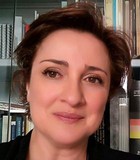
Funzione/Ruolo
Ricercatrice presso l’INGV (Istituto Nazionale di Geofisica e Vulcanologia) e Segretaria generale dell'International Association for Promoting Geoethics
Percorso professionale
Dopo la laurea in Scienze Geologiche e il Dottorato di Ricerca in Scienze della Terra all’Università di Roma La Sapienza, nel 1999 comincia la sua attività scientifica nel settore della pericolosità geologica e dei rischi naturali, collaborando con il Gruppo Nazionale per la Difesa dai Terremoti del Consiglio Nazionale delle Ricerche, l’Università di RomaTre, l’Università di Genova e il Politecnico di Milano. Dal 2008 al 2011 è professoressa di Geologia, Geologia applicata e Geotecnica alla Facoltà di Architettura dell’Università di Roma La Sapienza e all’Università di Viterbo Tuscia. Dal 2012 è docente del Corso di Dottorato in Paesaggio e Ambiente all’Università di Roma La Sapienza. Nel 2016 è docente dell’École Polytechnique Fédérale di Losanna (Svizzera) per il corso online “Disaster Risk Reduction” sul tema della resilienza e della geoetica. Nel 2012 fonda l’International Association for Promoting Geoethics, un network scientifico, con più di 1600 membri in 116 nazioni, che ha lo scopo di analizzare e valorizzare gli aspetti etici, sociali e culturali delle Scienze della Terra. È stata eletta recentemente Consigliera dello IUGS (International Union of Geological Sciences) per il quadriennio 2018-2022. È membro del Consiglio Direttivo della Società Geologica Italiana dal 2013, membro del Comitato Esecutivo dello IAEG Italy (International Association for Engineering Geology and the Environment) dal 2015 e coordinatrice della sezione di “Geoetica e Cultura Geologica” della Società Geologica Italiana dal 2012. Dal 2017 è membro dell’Ethical Advisory Board of ICOS ERIC (Integrated Carbon Observation System), infrastruttura di ricerca pan-europea dedicata ai dati scientifici sul ciclo del carbonio e sui gas serra. Dal 2014 al 2016 è Senior Editor della Oxford University Press per la collana “Natural Hazard Science”. Dal 2017 è membro dell’Editorial Board della rivista "Scienze e Ricerche".
Risultati scientifici
Dal 1999 partecipa a progetti di ricerca nazionali ed internazionali sulle pericolosità geologiche, i rischi naturali e la microzonazione sismica, con particolare riferimento ai centri storici e ai siti di beni monumentali. Nel 2007 comincia ad occuparsi di comunicazione della scienza e di divulgazione delle geoscienze, attività che la porta a pubblicare due libri con l’editore Il Mulino di Bologna. Dal 2012 si dedica costantemente alla sviluppo della geoetica, ovvero allo studio delle implicazioni etiche, sociale, filosofiche e culturali della ricerca e della pratica delle geoscienze, di cui è tra i maggiori esperti a livello mondiale. L’attività sulla geoetica la impegna nell’organizzazione di sessioni scientifiche nei maggiori convegni internazionali di geoscienze, nella pubblicazione di volumi monografici con editori scientifici internazionali, nella partecipazione in qualità di relatore ad invito a numerosi eventi scientifici. Attualmente nell’ambito del progetto europeo ENVRI-Plus è leader di un work-package dedicato allo sviluppo di un quadro di riferimento etico per le infrastrutture europee di ricerca nel settore ambientale e della Terra solida. Collabora con quotidiani e magazine (tra cui il Corriere della Sera) con articoli sui temi della pericolosità geologica, della prevenzione dai rischi, della divulgazione scientifica.
Attività editoriali e pubblicazioni
Silvia Peppoloni è autrice di due libri divulgativi: (con Doglioni), Pianeta Terra: una storia non finita (Il Mulino, 2016) e Convivere con i rischi naturali (Il Mulino, 2014).
Inoltre è autrice di numerose pubblicazioni scientifiche. Tra le più recenti:
[2018] Arattano M., Peppoloni S., Gatti A. The ethical duty to divulge geosciences and the improvement of communication skills to fulfill it. Episodes, 41(2): 97-103.
[2017] Peppoloni S., Di Capua G., Bobrowsky P., Cronin V. (a cura di). Geoethics at the heart of all geoscience. Annals of Geophysics, 60, Fast track 7.
[2017] Bobrowsky P., Cronin V., Di Capua G., Kieffer S., Peppoloni S. "The emerging field of geoethics". In Scientific Integrity and Ethics: With Applications to the Geosciences,a cura di L. Gundersen, Special Publication American Geophysical Union. New York, John Wiley.
[2016] Peppoloni S., Di Capua G. "Geoethics: Ethical, social, and cultural values in geosciences research, practice, and education". In Geoscience for the Public Good and Global Development: Toward a Sustainable Future, a cura di Wessel G., Greenberg J., Geological Society of America, Special Paper, 520:17-21.
[2016] Di Capua G, Peppoloni S, Amanti M, Cipolloni C and Conte G. "Site classification map of Italy based on surface geology". In Developments in Engineering Geology, a cura di Eggers M.J., Griffiths J.S., Parry S., Culshaw M.G. Geological Society, London. Engineering Geology Special Publication, 27: 147–158.
[2015] Peppoloni S., Di Capua G (a cura di). Geoethics: the Role and Responsibility of Geoscientists. Geological Society, London, Special Publications, 419.
[2015] Peppoloni S, Bobrowsky P, Di Capua G. "Geoethics: A Challenge for Research Integrity in Geosciences". In Integrity in the Global Research Arena, a cura di Steneck N, Anderson M, Kleinert S, Mayer T., World Scientific, pp. 287-294
[2014] Wyss M., Peppoloni S. (a cura di). Geoethics, Ethical Challenges and Case Studies, in Earth Sciences, Elsevier.
[2014] Matteucci R., Gosso G., Peppoloni S., Piacente S., Wasowski J. The “Geoethical Promise”: A Proposal. Episodes, 37, 3:190-191.
[2014] Peppoloni S., Di Capua G. "Geoethical aspects in the natural hazards management". In Engineering Geology for Society and Territory, Vol. 17, a cura di Lollino G, Arattano M, Giardino M, Oliveira R, Peppoloni S. Education, Professional Ethics and Public Recognition of Engineering Geology. Springer.
Riconoscimenti e premi
Nel 2017 riceve il Premio Speciale della Giuria alla XX Edizione del Premio di Letterario “Parco Majella" per il libro, scritto in collaborazione con Carlo Doglioni, Pianeta Terra: una storia non finita, che le vale anche il terzo posto al Premio Nazionale per la Divulgazione Scientifica nella categoria Matematica, Fisica e Scienze Naturali, 2016. Per lo stesso riconoscimento, è stata finalista nell’edizione 2014, con il libro Convivere con i rischi naturali.
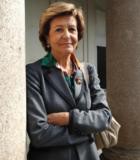
Funzione/Ruolo
Professoressa emerita di Microbiologia Agraria presso l'Università degli Studi di Milano
Percorso professionale
Nel 1965 consegue la Laurea in Scienze Biologiche e prosegue la carriera accademica fino a diventare professoressa ordinaria di Microbiologia degli alimenti presso l'Università degli Studi del Molise. Dal 1993 al 2013 insegna Microbiologia agraria all'Università degli Studi di Milano. Assume diversi incarichi all'interno della governance universitaria: è Preside della Facoltà di Agraria dal 2004-2010 e durante tale mandato fonda la Facoltà di Agraria dell'Università di Makeni, in Sierra Leone. Dal 2005 al 2013 è Delegata del Rettore alla Cooperazione Internazionale allo Sviluppo. Claudia Sorlini è stata inoltre componente del Comitato Pari Opportunità dell'Ateneo di Milano (2007- 2010) e coordinatrice della sezione Donne e Scienza del Centro di Ricerca GENDERS - Gender & Equality in Research and Science (2006 - 2013). Dal 2013 assume incarichi esterni all'Università: nel 2014 fa parte della Steering Committee of the EU Scientific Programme for Expo 2015e dal 2013 del Comitato Women for EXPO (Ministero Affari Esteri).
Risultati scientifici
È esperta nel campo delle biotecnologie microbiche applicate al biorisanamento di siti inquinati, alla produzione di bioenergia (metano, idrogeno e fertilizzanti) e ai biofertilizzanti. Insieme al suo team ha messo a punto un sistema basato su cellule batteriche vitali per recuperare antiche statue di pietra e affreschi; un'immagine di queste indagini ha ottenuto la copertina dell'American Society for Microbiology Journal. Ha ottenuto un'esperienza specifica nella biodegradazione di inquinanti xenobiotici come plastiche, pesticidi, solventi ecc. ed è stata coinvolta nella promozione delle donne scienziato accogliendo giovani studentesse nei suoi progetti scientifici europei, e partecipando, come referente scientifico, ai progetti, come Stages (Structural Transformation to Achieve Gender Equality in Science, 2012-2013), che sostengono le pari opportunità di genere nella scienza.
Attività editoriali e pubblicazioni
Claudia Sorlini è autrice di circa 300 pubblicazioni su riviste internazionali e nazionali e capitoli di libri. Fra le più recenti:
(2018) Vigani G., Rolli E., Dell'Orto M, Michoud G, Soussi A., Raffafu N., Borin S., Sorlini C., Zocchi G., Daffonchio D. Root bacterial endophytes confer drought resistance and enhance expression and activity of a vacuolar H+ -pumping pyrophosphatase in pepper plants. Environmental Microbiology.
(2018) Sorlini C. Agricoltura e alimentazione: quale futuro? Notiziario della Banca Popolare di Sondrio, 137: 14-17.
(2016) Sorlini C. "Cambiamento climatico, una sfida da vincere". In Clima, il pianeta che cambia. Touring Club Italiano Milano, 7-9.
(2015) Expo 2015 EU Scientific Steering Committee. Fischler F., Wilkinson D., Benton T., Daniel H., Darcy-Vrillon B. Hefferman P., Kok E., Saarela M., Jakubczyc E., Sorlini C., Swinnen J., von Brown J. New ways of providing knowledge to tackle food and nutrition security: what should the EU do? European Union.
(2015) Sorlini C., Dendena B., Grassi S. "The mutifaceted nature of the agrifood world". In The many faces of sustainability, a cura di Veca S., Feltrinelli, Milano, 3-29.
Riconoscimenti e premi
Nel 2015 riceve dal Capo dello Stato, Sergio Mattarella, l'onorificenza dell'Ordine al Merito della Repubblica Italiana, per "ricompensare benemerenze acquisite verso la Nazione nel campo delle lettere, delle arti, della economia e nel disimpegno di pubbliche cariche e di attività svolte a fini sociali, filantropici ed umanitari, nonché per lunghi e segnalati servizi nelle carriere civili e militari".
Nello stesso anno è insignita dell'Ambrogino D'Oro, Civica benemerenza del Comune di Milano. Ha inoltre ricevuto il Premio "Donne che ce l'hanno fatta" di Pechino, 20 - Making women world congressper il suoimpegno tra arte, scienza, cultura e sociale e il Premio Tecnovisionarie: donne che vedono il futuro di EXPO Women Global Forum - Women & Tech per aver dato un contributo accademico rilevante e aver coordinato progetti europei e nazionali sulle tematiche dell'ambiente, dell'agricoltura e delle bioenergie. Per il suo impegno inoltre nella cooperazione internazionale, con un master e un progetto di ricerca sull'agricoltura in zone aride e la supervisione della Facoltà di Agraria di Makeni (Sierra Leone), che ha contribuito a istituire.



